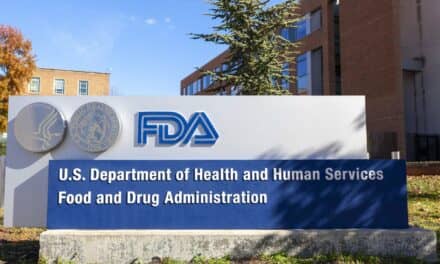The guidance establishes formal criteria for enforcement discretion during public health emergencies, responding to GAO recommendations from COVID-19 response review.
The US Food and Drug Administration (FDA) has issued final guidance detailing the framework it will use to authorize unapproved in vitro diagnostic tests in the event of future public health emergencies.
The guidance, “Consideration of Enforcement Policies for In Vitro Diagnostic Tests During a Section 564 Declared Emergency,” establishes a formal framework for how FDA will exercise enforcement discretion regarding unapproved diagnostic tests when the HHS Secretary declares an emergency under section 564 of the Federal Food, Drug, and Cosmetic Act.
The policy responds directly to a May 2022 Government Accountability Office (GAO) recommendation that FDA develop permanent criteria for enforcement discretion in future public health emergencies. GAO issued the recommendation following its review of FDA’s COVID-19 testing oversight in a report titled “FDA Took Steps to Help Make Tests Available; Policy for Future Public Health Emergencies Needed.”
“GAO recommended that FDA develop a policy for the use of enforcement discretion regarding unauthorized tests in future public health emergencies. This policy should include the conditions under which FDA would begin and end the use of such discretion,” according to the guidance document.
Four Key Assessment Factors
FDA will evaluate four primary factors when determining whether to begin or end an enforcement policy for unapproved diagnostic tests:
Public Health Need: FDA will assess testing requirements in the context of emergency response, including the number of available FDA-approved or authorized tests, time sensitivity of testing needs, transmission levels, population size potentially exposed, and morbidity and mortality rates.
Benefits and Risks: The agency will weigh potential public health benefits such as timely clinical management against risks including test technology complexity and the impact of false results on patient care and infection spread.
Alternatives: FDA will evaluate the extent to which appropriate alternative approved or authorized tests are available, considering manufacturing capacity and ability to meet testing demand.
Mitigations: The agency will consider factors that may reduce the risk of false results, including manufacturer experience, participation in government evaluation programs, validation procedures, and confirmatory testing availability.
Emergency-Specific Considerations
The guidance notes that different types of diagnostic tests may be appropriate depending on the emergency type. While molecular diagnostic tests may be suitable for virus detection, specialized tests might be needed for radiological exposure events.
During the COVID-19 pandemic, FDA initially issued broad enforcement policies to address testing shortages but later narrowed the scope to focus on specific test types where increased access remained appropriate. For mpox, FDA considered that while an FDA-cleared test existed for non-variola Orthopoxvirus DNA detection, it was limited to certain laboratories with turnaround times of several days.
Policy Duration and Updates
FDA intends to begin enforcement policies when potential benefits outweigh risks and end them when testing needs decline or sufficient approved tests become available. The agency say sit will periodically reassess public health needs and adjust policies accordingly.
During the COVID-19 declared emergency, FDA issued six updates to its coronavirus testing policy guidance to reflect changing national needs and the evolving diagnostic test landscape.
Any enforcement policy will include recommendations for validation procedures and labeling requirements. FDA may also establish review priorities for Emergency Use Authorization requests based on public health factors.
The guidance emphasizes that FDA retains discretion to pursue enforcement action against unapproved diagnostic tests when appropriate for public health protection, regardless of any enforcement policy in effect.
The final guidance was initially issued as a draft in May 2024 and incorporates public feedback received during the comment period.





